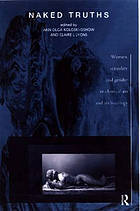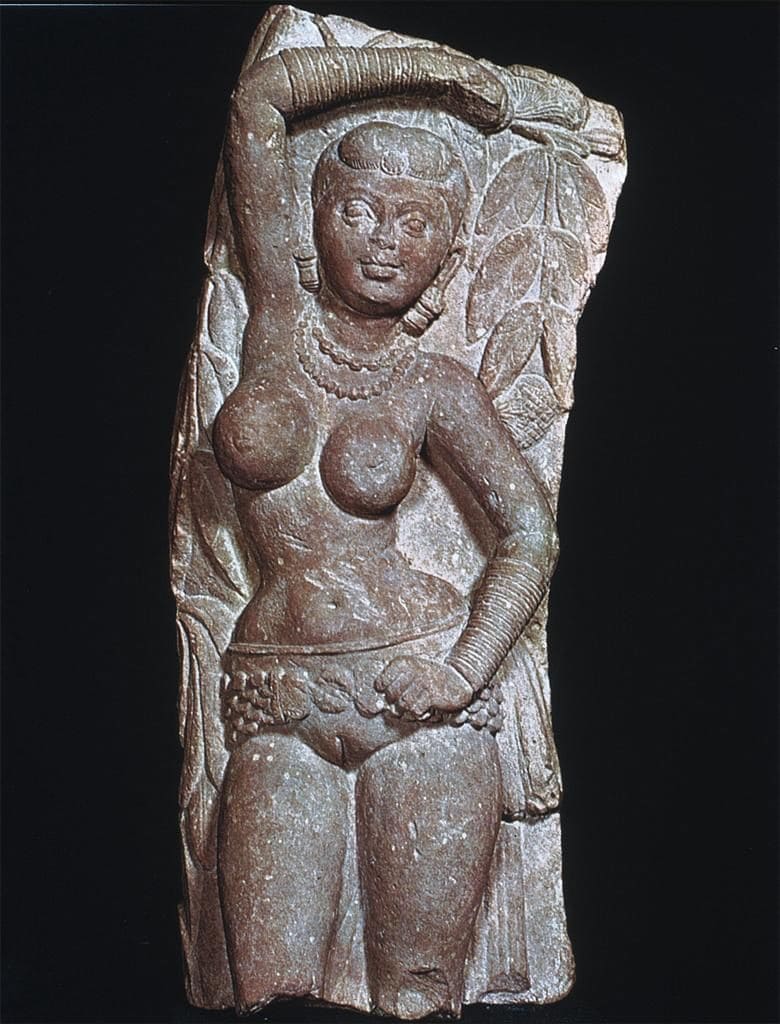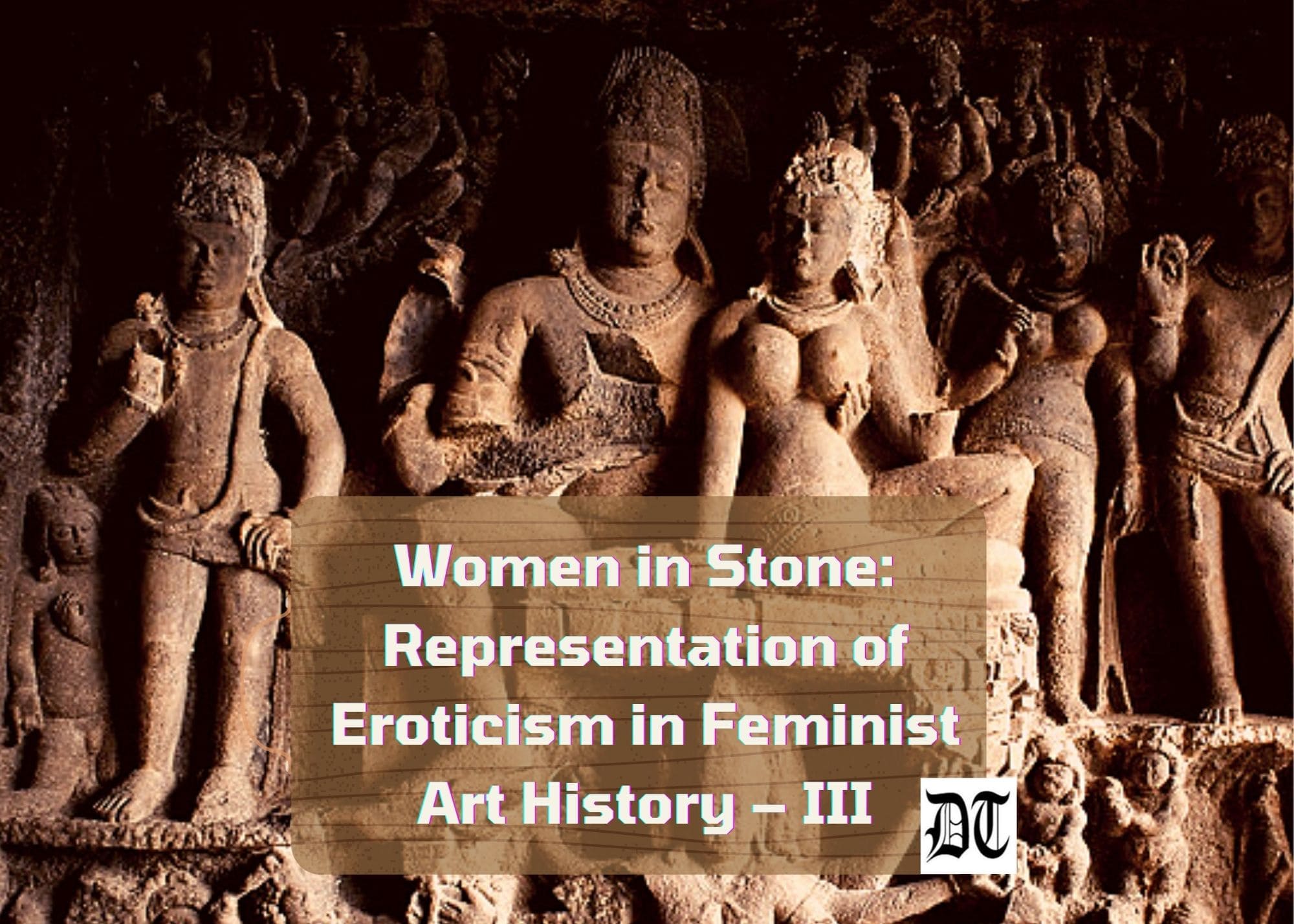In the third and final part, Nachiketa discusses how eroticism has been represented in the East and the West. An exclusive for Different Truths.
On set of feminist consciousness westerner-initiated debate whether female nude is male aesthetic idea in feminist art history. Agenda was sorted out to interpret women’s representation in ancient images. Naked female body if it is aesthetically pleasing than whose art is or whose flesh is spoken of? Focus was navigated to white male viewers, who standardised the appropriateness leading to power distribution in society in art history in the West. During the 1970s and 80s, the women’s movement had shaken the context and meaning of women’s representation. Berger, famous for ‘ways of seeing’ analysed Clark’s The Nude: A Study in Ideal Form (1956). Clark had a view on ‘nude’ described as a form of art, not just a subject, idealised artistic creation. He criticised nakedness as real life embarrassing because of shapelessness or less curvaceousness. Clark analysed, when naked women are fist of eye of categories of male gazer as arousal of eroticism, Berger’s ways of ‘seeing’ whipped that social and economic function of western art and female’s dearness on the basis of attractiveness to men, obligation of women to watch themselves being watched. Kenneth Clark argued in The Nude: A Study of Ideal Form.
No nude, however abstract, should fail to arouse in the spectator some vestige of erotic feeling, even though it be only the faintest shadow…
No nude, however abstract, should fail to arouse in the spectator some vestige of erotic feeling, even though it be only the faintest shadow – and if it does not do so, it is bad art and false morals. The desire to grasp and be united with another human body is so fundamental a part of our nature that our judgment of what is known as ‘pure form’ is inevitably influenced by it; and one of the difficulties of the nude as a subject for art is that these instincts cannot lie hidden, as they do, for example, in our enjoyment of a piece of potters, thereby they risk upsetting the unity of responses from which a work of art derives its independent life.
Berger, in ways of seeing, narrated, “…has to survey everything. She is everything she does because how she appears to others, and ultimately how she appears to men, is of crucial importance for what is normally thought of as the success of her life. Her own sense of being in herself is supplanted by a sense of being appreciated as herself by another … one might simplify this by saying: men act, and women appear. Men look at women. Women watch themselves being looked at. This determines not only most relations between men and women but also the relation of women to themselves.”
Feminists were further inspired when Berger triggers directly to painters – mentioned that naked women are being painted in such a way, which is away from female gaze, for desire and pleasure by amorous painters; not for women’s shake, thus, morally condemning the women whose nakedness are depicted for the male gaze.
“The problematic position of the female spectator remained, seeing, and enjoying – images of women generated under a system of male dominance and sexism…”
Shelby (2004) raised a question, “The problematic position of the female spectator remained, seeing, and enjoying – images of women generated under a system of male dominance and sexism, whether women were passive receptors of or active aggressor against the male viewpoint. Being torn they intellectually and emotionally identified with but failed to withstand male voyeurism. If they negotiate a positive emotional path between their own reality and the male centered depiction of them to assess the effect and significance of the oppressive male gaze whether so straight forward. Variation in images of women how far addressed the female experience.” Shelby argued the female nude as objectified, dehumanized, and idealised as an erotic sight for male pleasure in art on deconstructions by feminist revealing the social construction of gender, sexuality, and eroticism in representation.
To evaluate sexual art works critically objectively, context, to understand whether social and historical in which they were created. Erotic art was ultimately created for men and their desires. As Nochlin cited by Gayle shaw Clark, states: “As far as one knows, there simply exists no art, and certainly no high art, in the nineteenth century based upon women’s erotic needs, wishes or fantasies, and whether the erotic object be breast or buttocks, shoes or corsets, a matter of pose or of prototype, the imagery of sexual delight or provocation has always been created about women for men’s enjoyment, by men” once Friedman also said, “…the Greeks invented the nude. Christianity brought back the naked” as any understanding of the representation of the body was controlled by the Biblical paradigm of sexuality.”
Indian Yaksis sculpted with an expression of fertility and sensuality, amalgamated with the cultivated Greek Aphrodite, Athena, and Tyche.

Rishika Assomull (2013) stated polytheistic goddesses, deities, and demons are reflective of the cultures of a particular period. Then unique female forms of Gandhara, are assumed to be the result of an accumulation of predecessors of ancient Indian, Greek and Iranian models, which represented the versatile facets of the feminine ideal as a convention result of trade route along the Asian subcontinent. Indian Yaksis sculpted with an expression of fertility and sensuality, amalgamated with the cultivated Greek Aphrodite, Athena, and Tyche. In Gandhara, Yaksis observed a balance between the Indian traditional nudity and the Mediterranean Classical Phidian drapery style. Without losing her identity, the Yaksi transposed her physical and erotic tribhanga posture to a more subtle eventually branching off from her Shalabhanjika role and transforming into the maternal Hariti. Sculptures of deities were from the pantheon of Hindu, Zoroastrianism, and the Greek religion embracing one another and assimilated to such a degree that at times, their identities become completely elusive.
Worldwide feminist movement of 20th and 21st century a renewed topic on art and art history of the women by the women for the women is being discussed to analyses artistic production, representation and art historical discourse. When Gender is unit of a system of power, defined erstwhile patriarchal indexed as phallocentric symbolic order, renewed conscience and refreshed discourse developed restoration of the contribution of women to counter the effective exploration of the history of women in art history by the contemporary historian. Rejuvenation of discipline itself is observed. Question of gender and sexuality hitherto undisclosed regarding creativity, role, versatility excellency was compared, surveyed, audited, and reassessed. Power scale wise, gender can be measured to develop social existence of men and women and fix representations being a symbolic dimension in representation in art discourses.
A Critique
Anantaraman (2009) captivated the thought of colonial Europeans on Indian sculpture – Colonial European enjoyed the men’s pleasure, on way of seeing towards full bosomed yakshis and devis in diaphanous, tropical garment and concluded that Indian art was crafted by the men for the men of the men aiming erotic pleasure. Other way owing to Victorian Christians, unanimous on accustomed to restrictive customs and repressed desire, remained cautious of the ‘heathenish’ sexual exuberance of yakshis/ devis. Thus, western literature labeled Indian art and Hinduism as ‘feminine” and “decadent” and disseminated “the myth of a superior, masculine moral Christian West.” While nationalism was in the air, Indian nationalists responded creating “the trope of a powerful motherland, a goddess resembling devi icons.” Whereas scholarly opinions of early twentieth century liberals favored spiritually superiority in Indian art. Sublime and eroticism in Indian art was hybridised as practice. “Cosmic creation is regarded as a union of the divine male and female, which Hindus identify as Shiva-Shakti” (Anantaraman).
Yakshis were venerated as emblems of fertility, on whom the portrayal of female sexuality was sculpted…

And at the same time established the theory of religious inclination to Indian art to inculcate dharma to pilgrims and that artisans nourished symbols to relate sacred myths as primary purpose. Yakshis were venerated as emblems of fertility, on whom the portrayal of female sexuality was sculpted, so intended that might not arouse sexual stimulation. In temples, mostly dignified monks and nuns, who have abandoned earthly life for nirvana, were associated with such sculpted yakshis, devis like Lakshmi, or fleshy female donors. “It is more reasonable to suppose that the yakshis female features symbolised nature’s fecundity, and the artist simply sculpted ‘pictures’ of prosperous lay donors. This purpose differs from modern commercial posters of voluptuous women meant to catch the male gaze. It reminds us not to inscribe contemporary values on pre-modern artifacts, as those should be viewed through their own cultural lens as far as possible,” opined Anantaraman. So only decoding erotic art in stone of medieval period it is hard to conclude the social life of Indian woman.
Conclusion
Eroticism in the art of Indian culture presents an interesting subject other than religiosity. Such widespread and purported sexual depiction across temples or monuments might be the reflection of the periodical social reflection from socio-cultural forces. Representations involving orgies, bestialities, outburst of sexual depiction are whether phenomenon of social decadence or symptoms of degeneration and sexual indulgence or manifestations of Indian way of spirituality through eternal bliss. Sex in religious art is thought provoking as found in temples not mere aphrodisiac suggestion for common people. Sexual representation was a pan-Indian cultural feature as Hindu, Buddhist and Jain have presented erotic motifs in their art. Connection between sex and religion in medieval period temples across different regions might have a commonality of social forces with concurrence of shilpa canons. Social forces include permissiveness and religious sanctions or taboo. Sex was cultivated as an art and the knowledge as Vatsyayana schooling established in society of elite citizens.
“India is in an endless quest of unity in every field. In the pursuit of beauty her art realises the same transcendent unity through the harmony of opposite and conflicting aesthetic moods and emotion (Rasas) that her metaphysics and religion in the pursuit of truth and sublimity respectively achieved through the reconciliation of antinomian, directorial principles, and values of life, thought and experience. Indian art throws open the vistas of direct vision of the non-dual, transcendent reality (Aparaksha onuvuti) inducing a profound joy and exultation of the soul.” (Mukherjee 1965).
Khajuraho, Konark, Ellora Bhubaneswar and Meenakshi masterpieces are not commodities of commerce.
Medieval people enjoyed full freedom of thought expression than contemporary people encircled by thousand prohibitive measures having equivalent consciousness of the value quotients. Difference is the ongoing civilisation of modernity. Temple walls are not social media or commercial galleries. Khajuraho, Konark, Ellora Bhubaneswar and Meenakshi masterpieces are not commodities of commerce. Neither king were traders’ vested interest groups or temple sponsors that had commercial tourism intention for temple advertisement, nor the artisan /architect had malicious intent of material prosperity. For the sculptor, it was commissioned art for art’s sake.
The sculptor chiseled his ideas alone or transcribed the ideas of board of court members on stone is unknown. No evidence of commercial acts is recorded elsewhere, on the contrary temple was king’s expenditure but eroticism has an auspicious significance of some kind. Auspiciousness is debated by the modernists except propitious nature of decorative motifs. Belief is that temple erotic imagery is auspicious or apotropaic. Shilplaprakash, the canon says without women the monument will be of inferior quality like a house without a wife. This auspiciousness is coded by the symbol of fertility embedded in women. Synonymous with fertility or abundance (Satpathbrahaman). Tantric practitioners say that the goddess in women has central dogma. Modernist, occidental or oriental are now away from the opinion that sexual imagery are auspicious – what was once raised for to protect and beautify temples.
References
1. Mukherjee Radhakamal, ”Rasas” as springs of art in Indian aesthetics. The journal of aesthetics and art criticism, Vol 24, No 1 Oriental Aesthetics (Autumn 1965) pp 91-96
2) Elgood Heather, Hinduism and the Religious Arts: Cassell New York, 2000
3) Rajpal D and Kushal Prakash, Femininity as divinity Depiction of Goddess at Kailash Temple, Ellora, Antrocom online journal of anthropology 2014 vol 10n 2 ISSN1913-2880 pp151-161
4) Sita Anantha Raman, Women in India: A Social and Cultural History 2009
5) Brown Shelby, Ways of Seeing Women in Antiquely; An Introduction to Feminism in Classical Anthology and Ancient Art History – Edited by Ann Olga Koloski-Ostrow and Claise 1. Lyons.
Naked truths; Women sexuality, and Gender in Classical Art and Archeology, Routledge 2004.
6) Gayle Shaw Clark, Sexuality; Social and Cultural Constructs of Women Represented through Art – May 2008
7) Rishika Vijay Assomull; The Classical Influence on the Representation of Women in the Art of Buddhist Gandhara senior theses Brade University 2013.
(Concluded)
Visuals by Different Truths and the internet.





 By
By

 By
By
 By
By